Products
Introduction
Garden with Insight
PlantStudio
StoryHarp
Community
Links
Directories
Books
|
|
Recommended Books

|
This annotated list describes some of our favorite books about
gardening,
botany and
soil science.
We use these books and recommend them.
Click on any of the links in the sections
below to go directly to the order page for that book at amazon.com.
As an amazon.com associate,
we receive a small commission on each book ordered through our site,
so this is a great way to support our work.
|
|
Gardening
... back to top
|

|
Knott's Handbook For Vegetable Growers
by Donald N. Maynard et al.
Knott's handbook, first published in 1956, is a compilation of many tables of information about common vegetables. For example: germination and growth temperatures, nutritional components of edible parts, pH preferences, nutrient absorption, prevalent diseases and pests, days to harvest, yields, and food storage techniques. There are also sections on soils, fertilizers, weeds, and irrigation. We referred to this book often in verifying data for our garden simulator. It is a good source book for questions about vegetable gardening.
|

|
The Garden Primer
by Barbara Damrosch, Ray Maher (Illustrator), Carol Bolt (Illustrator)
There are a lot of garden books out there (and we have a lot of them), but this book is unique for three main reasons.
- We like Barbara Damrosch's writing style, which is conversational and clear (and actually fun to read).
- She obviously knows a lot about gardening and about the questions gardeners ask.
- We like her emphasis on learning about plants and soil in order to grow a great garden, and her chaper "What Plants Need" is a great introduction to botany and soil science for the gardener.
A large portion of the book is devoted to advice on particular plants (divided into annuals, perennials, vegetables, herbs, fruits, bulbs, roses, lawns, vines, shrubs, trees, wildflowers, and houseplants). Information on each plant is not just a brief set of facts, but real advice on what you need to consider to grow it (a good mulch, pest-resistant varieties, sandy soil) and what are its special properties (makes a great salad, is easy to grow, bounces back from damage). Helpful (and beautiful) illustrations round out the book.
|

|
Square Foot Gardening
by Mel Bartholemew
We love the square foot gardening approach: it makes the most of small garden spaces,
reduces time spent weeding, reduces the impact of pressure on the soil (by leaving spaces for walking), and just produces great results. We've grown several gardens using this method and have been very happy with it.
Besides explaining the square-foot approach, this book also contains many practical tips on growing common vegetables including planning the timing of planting and harvesting.
|

|
The Organic Garden Book
by Geoff Hamilton
As with many of the Dorling Kindersley books, this book has a large number of pictures. For example, pages with sets of color photographs include soil types (clumps of soil), common weeds, decorative plants by season of flowering, many types of vegetables, and herbs. Profuse photographs and illustrations show people carrying out described tasks such as building a compost heap, setting traps for pests, and planting trees. Coverage of most topics is brief, but a broad range of topics is covered. This book is a great source when you want to see how something is done or how something ought to look.
|
|
Botany
... back to top
|

|
Plant Form : An Illustrated Guide to Flowering Plant Morphology
by Adrian D. Bell, Alan Bryan (Illustrator)
This book is a guide to the many fascinating and sometimes bizarre variations in plant structure. We used it extensively in writing the "plant drawing
algorithm" used in Garden with Insight and (with changes) in PlantStudio. What sets this book apart is:
- Its visual design is very pleasing, with many wonderful photographs and excellent line drawings.
- The book conveys some of the fascination in studying plant form -- the intricacies, the contradictions, the mathematical beauty, the incredible diversity.
- The book is extraordinarily well organized, with each topic referring to many other related topics, so that it is possible to follow an interesting phenomenon throughout the diversity of plant life.
We recommend this as a source book on botanical form and as a browsing-book for anyone for whom contemplating the structure of plants is a pleasurable exercise.
|

|
Botany for Gardeners : An Introduction and Guide
by Brian Capon
We recommend this book as an introduction to botany for people who
may have had a science course in high school but forgot it long ago and now
want to learn more about the plants in their garden. The basic facts of plant
growth and development, reproduction and adaptation are presented very clearly
and simply, with many photographs and illustrations. Many terms are defined in
the text and in the glossary/index in the back. You could read a botany textbook
to find this information, but this book presents it in a more concise (and friendly) manner
from the point of view of an interested gardener.
|
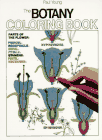
|
The Botany Coloring Book
by Paul G. Young, Jacquelyn Giuffre (Illustrator)
As a sort of visual textbook of botany, this book presents descriptions of plant structures on each left-side page corresponding to line drawings on each right-side page. Coloring each line drawing can help you learn about the structures shown. The first half of the book is largely devoted to plant cell structure and non-angiosperms (which are not usually of great interest to gardeners), but the second half of the book visually defines many important terms such as monocot, endosperm, carpel, and panicle. A full index helps you find drawings of terms. This is a useful source book for understanding the parts of plants often mentioned in plant identification keys.
|
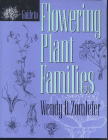
|
Guide to Flowering Plant Families
by Wendy B. Zomlefer
We've used this book mainly as a reference to create plants for PlantStudio. As a guide to 130 common US families of flowering plants, it is clear and comprehensive, with an exhaustive number of fine illustrations. The only thing lacking is that not every plant has a whole-habit illustration (of the entire plant). However, there is much information on plant identification, relationships between plant families, and economic uses of plants. The glossary is large and very well illustrated.
|
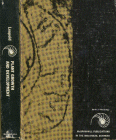
|
Plant Growth and Development
by Aldo Carl Leopold
Our 1964 copy of this book is dog-eared and covered with sticky notes. Why? Because so much of recent botanical research has concentrated on cell physiology and molecular biology, it's hard to find a good recent book on basic plant morphology and growth. This book may be old news, but for simulating organism-level plant growth there is much useful information in it. For example, it presents much experimental data on growth rates, mobilization of photosynthate to different parts of the plant, leaf development and efficiency, environmental controls of flowering, senescence, and growth of storage organs and fruit.
When we last looked (12/31/98), this book was out of print, but amazon.com says it can search for used copies.
|

|
Physiology of Crop Plants
by Frank P. Gardner, Brent Pearce, Roger Mitchell
We found this textbook to be a good explanation of many important topics of plant growth (e.g., photosynthesis, resource transport and partitioning, water, minerals, germination, growth, flowering and fruiting). This book keeps much more of the organismal tone of Leopold's Plant Growth and Development than do other more recent books. We especially liked the book's many graphs and diagrams and its plain, simple text style.
It is written for undergraduate-level courses and presupposes some initial understanding of biological terms, lying perhaps halfway between Capon's Botany for Gardeners and a senior-level botany textbook.
When we last looked (12/31/98), this book was back ordered from the publisher, and amazon.com said it may be available in 3-5 weeks.
|
|
Soil science
... back to top
|

|
Towards Holistic Agriculture: A Scientific Approach
by R.W. Widdowson
This book is a treatise for farming (and gardening) holistically -- that is, with a full knowledge of the complexity of soils and soil biota. It explains in detail:
- why tilling and compacting soil leads to erosion
- why application of pure inorganic minerals leads to leaching of crucial organic materials
- why the soil's biological community matters
- how farming (and gardening) can produce the greatest result while maintaining soil health and productivity
In short, this book explains why and how farming can be either destructive or supportive of the soil. Anyone who wants to understand why organic farming (and gardening) is important should read it.
The book also covers many aspects of farming including rotations, pests and diseases, animal husbandry, grassland management, and economics.
|

|
The Soul of Soil: A Guide to Ecological Soil Management
by Grace Gershuny, Joseph Smillie (Contributor)
This book is much like Widdowson's Towards Holistic Agriculture, but is
oriented more toward the beginning organic gardener or farmer. Many important topics related to soil health and ecology are explained in simple terms, with useful advice on topics such as testing your soil, examining weeds in an area to learn about the soil there, using different compost materials, and managing soil organic matter. A section of tables in the back gives information about green manures, mineral and organic fertilizers, nutrients, and soil organisms. This is a good starting-out book for learning how to think about soil in your garden in the most sustainable way.
|
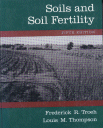
|
Soils and Soil Fertility
by Frederick R. Troeh, Louis M. Thompson
This book is an excellent overview of soil science. Though other textbooks cover the same subject well, we found this book to be exceptionally down-to-earth and easy to read.
We found ourselves referring to this book's clear explanations of basic soil science concepts many times in deciding how to present the material in our garden simulator.
When we last looked (12/31/98), the publisher was out of stock on this book, and amazon.com said to check the page for updates.
|
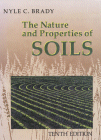
|
The Nature and Properties of Soils
by Nyle C. Brady, Ray R. Weil, Raymond Weil
This book was our bible for studying the soil science we needed to learn to create our garden simulator. While it is not as friendly in tone as Troeh and Thompson's
Soils and Soil Fertility, this book is a very comprehensive treatment of the subject. There is a good amount of detail on soil chemistry, nutrient and water cycles, erosion, and farming practices.
|
|
Search
... back to top
|
|
|
|

